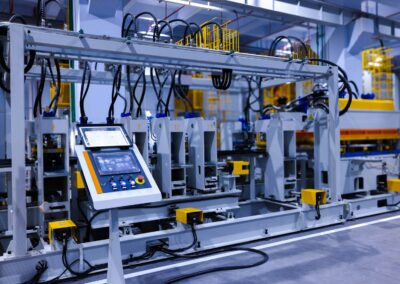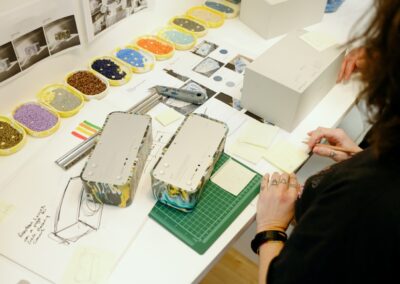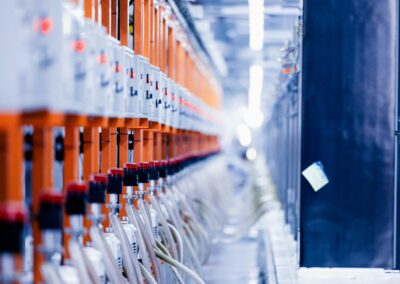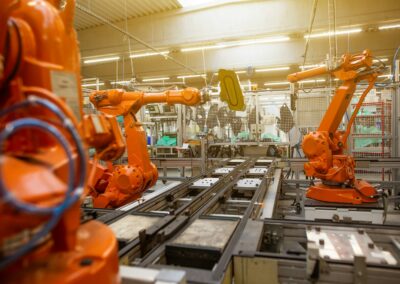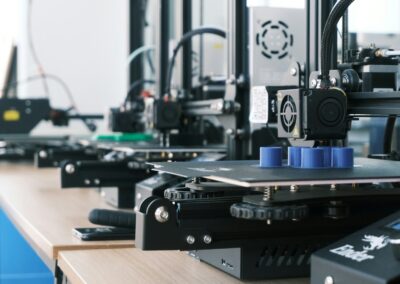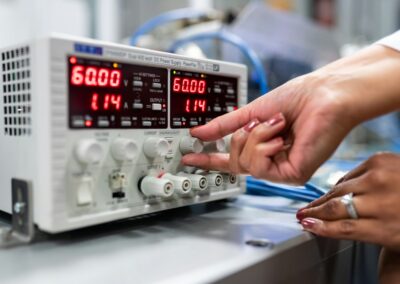Enhancing Product Development Efficiency through Advanced Technologies
Understanding Digital Twins in Manufacturing
The implementation of digital twins in manufacturing represents a pivotal advancement in reducing time-to-market for new products. A digital twin is a virtual replica of a physical product, process, or system that enables real-time monitoring, simulation, and optimization. By integrating this technology, manufacturers can significantly streamline their development processes, leading to faster and more efficient product launches.
In regions such as Saudi Arabia and the UAE, where industrial innovation is a key focus, the adoption of digital twins is transforming how companies approach product development. Cities like Riyadh and Dubai are leading the way in incorporating these advanced technologies to enhance manufacturing efficiency. For instance, digital twins allow manufacturers to test and refine products in a virtual environment before physical prototypes are created. This capability accelerates the development cycle, reduces costs, and minimizes the risks associated with new product launches.
Moreover, digital twins facilitate enhanced collaboration among teams by providing a unified platform for data analysis and decision-making. Engineers, designers, and managers can work together in a virtual environment to address potential issues, optimize designs, and implement changes more rapidly. This collaborative approach ensures that all stakeholders are aligned, leading to a more streamlined and efficient development process.
Streamlining Development Processes with Digital Twins
The use of digital twins in manufacturing directly impacts the time-to-market by streamlining various aspects of the development process. One of the key benefits is the ability to simulate different scenarios and test product performance under various conditions. This simulation capability allows manufacturers to identify and address potential design flaws or operational issues early in the development cycle.
By leveraging digital twins, manufacturers can also optimize their production processes. For example, virtual simulations can help in designing more efficient manufacturing workflows, predicting maintenance needs, and reducing downtime. This optimization leads to a more agile production environment, where changes can be implemented quickly based on real-time data and insights.
In addition, digital twins enable predictive analytics, which can further accelerate the development process. By analyzing data from virtual models, manufacturers can forecast product performance, market demand, and potential challenges. This proactive approach allows companies to make informed decisions and adapt their strategies to meet market needs more effectively.
The Role of AI and Machine Learning in Enhancing Digital Twins
The integration of AI and machine learning technologies with digital twins amplifies their potential to reduce time-to-market in manufacturing. AI algorithms can analyze vast amounts of data generated by digital twins to provide actionable insights and recommendations. This data-driven approach enhances decision-making and accelerates problem-solving during the development process.
Machine learning models can also learn from historical data and simulations, improving the accuracy of predictions and optimizations. For instance, AI-powered digital twins can identify patterns and trends that might not be evident through traditional analysis. This capability allows manufacturers to anticipate potential issues, optimize designs, and refine production processes more effectively.
In regions like Saudi Arabia and the UAE, where technological advancements are highly valued, the adoption of AI-enhanced digital twins is driving innovation in manufacturing. Companies in Riyadh and Dubai are leveraging these technologies to stay competitive, improve product quality, and shorten development cycles. By combining digital twins with AI and machine learning, manufacturers can achieve a higher level of efficiency and responsiveness, ultimately reducing time-to-market for new products.
Conclusion: The Future of Digital Twins in Manufacturing
The integration of digital twins in manufacturing is a game-changer for reducing time-to-market and enhancing product development processes. By providing a virtual replica of physical products and processes, digital twins enable manufacturers to streamline their operations, optimize designs, and make data-driven decisions.
As technological advancements continue to evolve, the role of digital twins will become even more critical in the manufacturing sector. In regions like Saudi Arabia and the UAE, where innovation is a driving force, the adoption of digital twins will play a significant role in achieving faster, more efficient product development. By embracing this technology, manufacturers can gain a competitive edge, reduce costs, and accelerate their time-to-market for new products.
In conclusion, the future of manufacturing is closely linked to the advancement of digital twins and their integration with AI and machine learning. By leveraging these technologies, companies can enhance their development processes, improve product quality, and achieve greater success in an increasingly competitive market.
—
#DigitalTwins, #Manufacturing, #TimeToMarket, #ProductDevelopment, #SaudiArabia, #UAE, #Riyadh, #Dubai, #ArtificialIntelligence, #Blockchain, #Metaverse, #ExecutiveCoaching, #GenerativeAI, #ModernTechnology, #BusinessSuccess, #Leadership, #ManagementSkills, #ProjectManagement



